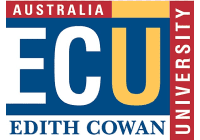Have you ever wondered how big companies or organisations manage to complete projects on time and within budget? The answer lies in project management. Project management is an important process that helps businesses to complete complex tasks with ease. But what exactly is basic project management? And how does it work in Australia?
In short, basic project management is a structured approach to completing a project from start to finish. It involves five key stages: initiation, planning, execution, monitoring and control, and closure. In Australia, project management is a widely used discipline across various industries, including construction, information technology, and engineering.
If you're interested in learning more about basic project management in Australia, you've come to the right place. In this article, we will delve into the fundamentals of project management, explore the benefits of using project management methodologies, and provide tips on how to manage your own projects successfully.
So, let's get started!
Quick Links To Online Project Management Degrees
Edith Cowan University
Graduate Certificate of Strategic Project Management Online
- 6 months (minimum) part-time
- 3 Units
- $13,020 FEE-HELP available
RMIT Online
Graduate Certificate in Project Management
- 8 months intensive, part-time
- 4 Courses (7 weeks each)
- $3,840 per course, FEE-HELP available
Southern Cross University
Graduate Certificate in Project Management (Online)
- 8 months part-time
- 4 Units
- $2,990 per unit, FEE-HELP available
What is Project Management?
Project management refers to the process of planning, carrying out, monitoring, and directing a project, as well as bringing it to a successful conclusion, all within the constraints of a certain amount of time and financial resources. In order to assure the success of the project, it is necessary to coordinate the available resources, manage the risks, and communicate with the many stakeholders.
The following activities are often included in the stages of the project management process:
- Initiation is the stage of a project in which the project manager is responsible for determining the project's goals, stakeholders, and resources, as well as developing an initial strategy for the project.
- During the stage known as "planning," the project manager is responsible for developing an all-encompassing plan for the project. This plan will detail the project's scope, timeframe, budget, risks, and quality requirements. The project will be carried out according to the guidelines outlined in the plan for the project.
- In the stage known as "Execution," the project manager is responsible for putting the project plan into action, managing the available resources, and keeping track of the overall progress of the project to ensure that it remains on schedule.
- During the stage known as "Monitoring and Control," the project manager routinely checks the progress of the project, evaluates it in relation to the project plan, and makes any required adjustments to ensure that the project stays on track.
- The last stage of a project is called the closing stage, and it is at this stage that the project manager finishes the project, receives input from stakeholders, and analyses the success of the project.
A mix of technical knowledge and the ability to communicate with others is necessary for successful project management.
Gantt charts, the critical path approach, and risk management are all examples of tools and procedures that project managers need to be adept with in order to do their jobs effectively. In addition to this, they need to have strong communication skills, leadership abilities, and the ability to solve problems in order to effectively manage teams and stakeholders.
In conclusion, the management of a project is an essential procedure that must be carried out in order to guarantee the successful completion of the project. This procedure consists of several steps that must undergo meticulous planning, execution, monitoring, and control.
Project managers have the ability to guarantee that their projects are finished on time, under budget, and to the satisfaction of all of the stakeholders by efficiently managing the resources, risks, and communication associated with such projects.
The Project Lifecycle
The project management process is directed by a framework known as the project lifecycle, which runs from the beginning through the end of the project. It is comprised of a number of stages that need to be finished in the specified order in order to guarantee that the project is successful in meeting its goals and aims.
Stage 1: Initiation
The beginning of project management is represented by the initiating stage of the project lifecycle. During this stage, you will determine the project's goals, stakeholders, and resources, in addition to developing a preliminary plan for the undertaking. In addition to this, the project manager is responsible for analysing the practicability of the endeavour and determining whether or not it is in line with the objectives and principles of the organisation.
During this phase of the project, the project manager would often construct a business case that details the benefits, costs, risks, and timescales associated with the project. The business case helps the project sponsor make educated decisions about whether or not to move forwards with the project by acting as a justification for the project and providing information that is necessary for making such decisions.
Stage 2: Planning
The second step in the process of carrying out a project is known as the planning stage. Creating a detailed project plan that describes the project's scope, timing, budget, hazards, and quality requirements is required for it. The project plan is the principal instrument that is used for monitoring and managing the project. It also acts as a blueprint for the implementation of the project.
At this point in the process, the project manager often creates a project charter. This document provides official authorisation for the project and details the duties and responsibilities that each member of the project team will play. In addition, the project manager is responsible for developing a work breakdown structure (WBS), which divides the overall project into a series of smaller, more manageable tasks and outlines the deliverables for the undertaking.
Stage 3: Execution
The third stage of a project's lifecycle is known as the execution stage. In order to guarantee that the project stays on track, it requires putting the project plan into action, managing the resources, and monitoring the progress of the project. During this phase of the project, the project manager is responsible for managing the expectations of all stakeholders, maintaining communication with the project team, and resolving any problems that may crop up.
It is the responsibility of the project manager to guarantee that the work is finished on time, within the allotted budget, and to the stakeholders' total satisfaction. In order to do this, the project manager has to successfully manage the project team, make certain that resources are distributed in an effective manner, and use various tools and techniques for project management in order to monitor the progress of the project.
Stage 4: Monitoring and Control
The project lifecycle has five stages total, and the fourth step is the monitoring and control stage. It entails doing frequent reviews of the project's progress, comparing that progress to the plan for the project, and making any required modifications to ensure that the project stays on track.
In addition, the project manager is responsible for managing risks, finding solutions to problems, and maintaining communication with the project's stakeholders to ensure that the project is moving forwards according to plan.
In this phase of the project, the project manager will often make use of various tools and techniques for project management, such as earned value management (EVM) and change control, in order to monitor the progress of the project and manage any changes to the project's scope, timetable, or budget.
Stage 5: Project Closure
In the project closure phase, when the project has been finished, the project manager will collect input from the project's stakeholders, assess the level of success achieved by the project, and write up a report on the project closing. The report on the completion of the project describes the accomplishments of the project, as well as its difficulties, the lessons learned, and recommendations for future initiatives.
Essential Tools and Techniques
For the successful administration of a project, it is necessary to make use of a variety of important tools and approaches. These methods and technologies can assist project managers in planning, carrying out, monitoring, and closing off projects efficiently and successfully. The following are examples of some of the most important tools and methods:
Project Charter
A document known as a project charter is one that provides an overview of the project's objectives, goals, scope, timeframe, and budget. In addition to that, it names the project manager, the project sponsor, and the stakeholders. It is vital to have a project charter in order to guarantee that all stakeholders have a complete comprehension of the project as well as their respective roles and duties.
Work Breakdown Structure (WBS)
A hierarchical split of the project into smaller, more manageable components is what's known as a work breakdown structure (WBS). The WBS provides assistance to project managers in organising and defining the scope of the project, as well as in determining the activities that must be completed to finish the project successfully.
Gantt Chart
Gantt charts are graphical representations of project schedules that illustrate the beginning and ending dates of tasks as well as the relationships between those activities. Project managers are able to visualise the chronology of the project better and spot possible scheduling difficulties thanks to the Gantt chart.
Critical Path Method (CPM)
The critical path approach is a strategy for managing projects that is used to figure out the least amount of time needed to finish a project as quickly as feasible. The Critical Path Method (CPM) provides assistance to project managers in determining the critical path, which is the sequence of activities that must be finished on time in order to guarantee that the project will be finished on schedule.
Risk Management Plan
The procedure for detecting, evaluating, and managing the risks associated with a project is outlined in detail in a risk management strategy. Project managers are able to more effectively identify possible hazards and establish methods to minimise or avoid such risks with the assistance of the risk management strategy.
Communication Plan
A communication strategy details the manner in which information on a project will be distributed to various stakeholders. The communication strategy provides assistance to project managers in ensuring that all stakeholders are kept abreast of the status of the project as well as any problems that may emerge.
Quality Management Plan
The procedure that will be followed to guarantee that the project will accomplish its quality goals is outlined in a quality management plan. Project managers are able to more easily define quality standards and design methods to guarantee that the project satisfies those requirements with the assistance of the quality management plan.
In order to properly plan, execute, monitor, and control projects, as well as bring them to a successful conclusion, project managers are required to make use of a number of fundamental tools and procedures. Project charters, work breakdown structures, Gantt charts, critical path approaches, risk management plans, communication plans, and quality management plans are some of the tools and techniques that are included in this category.
Project managers have the ability to guarantee that their projects are finished on time, without exceeding the allotted budget, and to the satisfaction of the various stakeholders by making use of the aforementioned tools and approaches.
Benefits of Basic Project Management
Organisations that aim to raise the percentage of successful projects may reap many benefits by using even the most fundamental aspects of project management. The following is a list of some of the primary advantages that basic project management offers:
Improved Project Planning
For a project to be successful, efficient project planning is very necessary. A fundamental aspect of project management is the application of a methodical strategy to the planning phase of a project.
This strategy entails defining project objectives, determining project tasks, developing project timetables, and determining project budgets. Organisations may guarantee that their projects are well-planned and have a greater probability of success by employing fundamental project management practices in their work.
Better Resource Management
Simple project management enables organisations to improve the efficiency with which they manage their resources. Organisations are able to distribute resources more effectively and avoid resource waste if they first determine the activities associated with a project and the requirements for those resources. This may result in cost savings as well as enhanced outcomes for the project.
Enhanced Communication
The need to maintain open lines of communication at all stages of a project is emphasised by fundamental project management practices. Project managers are able to keep everyone up to date on the status of the project as well as any problems that may occur by developing a communication strategy and maintaining consistent contact with the project's stakeholders. This has the potential to increase stakeholder participation and decrease the risk for the project.
Increased Efficiency and Productivity
The execution of a project may be more effectively managed and managed more efficiently with the help of a structured method provided by fundamental project management. The successful completion of a project on time and within budget may be ensured for an organisation if the project is first broken down into a series of smaller, more manageable components. This may result in cost savings as well as enhanced outcomes for the project.
Improved Risk Management
Planning for risk management is integral to basic project management. This aspect of project management assists organisations in identifying and mitigating project hazards. The possibility of a project failing can be reduced, and the results of the project can be improved if an organisation takes the time to identify possible risks and devise measures to mitigate those risks.
Better Quality Control
The need to maintain quality control throughout the duration of a project is emphasised by fundamental project management practices. Organisations are able to guarantee that the results of projects live up to the expectations of stakeholders if they first establish quality standards and then monitor project development in comparison to those standards. This has the potential to increase satisfaction among project stakeholders while also lowering risk.
Organisations that aim to raise the percentage of their projects that are successful may reap many benefits by using even the most fundamental aspects of project management. These benefits include improved project planning, resource management, enhanced communication, higher efficiency and productivity, risk management, and quality control.
To guarantee that their projects are finished on time, within budget, and to the satisfaction of stakeholders, organisations may make use of even the most fundamental aspects of project management.
Bottom Line
To summarise, project management is a vital component of any company or organisation in Australia. Simple project management entails making plans, getting projects organised, and keeping an eye on their progress to guarantee that they are finished effectively. In addition to that, it incorporates risk management, budgeting, and effective communication.
If you live in Australia and are interested in enhancing your capabilities in project management, there are a variety of training courses and certifications accessible to you. The knowledge and abilities to manage projects in an effective and efficient manner will be provided to you via the completion of these courses.
Are you interested in becoming a certified project manager in Australia so that you can take your project management abilities to the next level?
Content Summary
- Project management is a crucial process that helps businesses to complete complex tasks with ease.
- In short, basic project management is a structured approach to completing a project from start to finish.
- It involves five key stages: initiation, planning, execution, monitoring and control, and closure.
- In Australia, project management is a widely used discipline across various industries, including construction, information technology, and engineering.
- Initiation is the stage of a project in which the project manager is responsible for determining the project's goals, stakeholders, and resources, as well as developing an initial strategy for the project.
- The last stage of a project is called the closing stage, and it is at this stage that the project manager finishes the project, receives input from stakeholders, and analyses the success of the project.
- A mix of technical knowledge and the ability to communicate with others is necessary for successful project management.
- Gantt charts, the critical path approach, and risk management are all examples of tools and procedures that project managers need to be adept with in order to do their jobs effectively.
- In conclusion, the management of a project is an essential procedure that must be carried out in order to guarantee the successful completion of the project.
- The project management process is directed by a framework known as the project lifecycle, which runs from the beginning through the end of the project.
- The beginning of project management is represented by the initiating stage of the project lifecycle.
- Creating a detailed project plan that describes the project's scope, timing, budget, hazards, and quality requirements is required for it.
- The project plan is the principal instrument that is used for monitoring and managing the project.
- At this point in the process, the project manager often creates a project charter.
- The third stage of a project's lifetime is known as the execution stage.
- In order to guarantee that the project stays on track, it requires putting the project plan into action, managing the resources, and monitoring the progress of the project.
- The project lifecycle has five stages total, and the fourth step is the monitoring and control stage.
- In the project closure phase, when the project has been finished, the project manager will collect input from the project's stakeholders, assess the level of success achieved by the project, and write up a report on the project closing.
- For the successful administration of a project, it is necessary to make use of a variety of important tools and approaches.
- Project managers are able to visualise the chronology of the project better and spot possible scheduling difficulties thanks to the Gantt chart.
- Project managers are able to more effectively identify possible hazards and establish methods to minimise or avoid such risks with the assistance of the risk management strategy.
- The procedure that will be followed to guarantee that the project will accomplish its quality goals is outlined in a quality management plan.
- Project managers are able to more easily define quality standards and design methods to guarantee that the project satisfies those requirements with the assistance of the quality management plan.
- In order to properly plan, execute, monitor, and control projects, as well as bring them to a successful conclusion, project managers are required to make use of a number of fundamental tools and procedures.
- Project charters, work breakdown structures, Gantt charts, critical path approaches, risk management plans, communication plans, and quality management plans are some of the tools and techniques that are included in this category.
- Organisations that aim to raise the percentage of their projects that are successful may reap many benefits by using even the most fundamental aspects of project management.
- For a project to be successful, efficient project planning is very necessary.
- A fundamental aspect of project management is the application of a methodical strategy to the planning phase of a project.
- The need to maintain open lines of communication at all stages of a project is emphasised by fundamental project management practises.
- Project managers are able to keep everyone up to date on the status of the project as well as any problems that may occur by developing a communication strategy and maintaining consistent contact with the project's stakeholders.
- This has the potential to increase stakeholder participation and decrease the risk for the project.
- The execution of a project may be more effectively managed and managed more efficiently with the help of a structured method provided by fundamental project management.
- The successful completion of a project on time and within budget may be ensured for an organisation if the project is first broken down into a series of smaller, more manageable components.
- Planning for risk management is an integral part of basic project management.
- This aspect of project management assists organisations in identifying and mitigating project hazards.
- The need to maintain quality control throughout the duration of a project is emphasised by fundamental project management practises.
- Organisations can guarantee that the results of projects live up to the expectations of stakeholders if they first establish quality standards and then monitor project development in comparison to those standards.
- Organisations that aim to raise the percentage of their successful projects may reap many benefits by using even the most fundamental aspects of project management.
- These benefits include improved project planning, resource management, enhanced communication, higher efficiency and productivity, risk management, and quality control.
- To guarantee that their projects are finished on time, within budget, and to the satisfaction of stakeholders, organisations may make use of even the most fundamental aspects of project management.
- To summarise, project management is a vital component of any company or organisation in Australia.
- In addition to that, it incorporates risk management, budgeting, and effective communication.
- If you live in Australia and are interested in enhancing your capabilities in project management, there are a variety of training courses and certifications accessible to you.
- The knowledge and abilities to manage projects in an effective and efficient manner will be provided to you via the completion of these courses.
Frequently Asked Questions
The project manager is responsible for planning, executing, monitoring, and controlling the project while managing resources, risks, and stakeholders.
Australia's common project management certifications include Project Management Professional (PMP) and Prince2.
A Gantt chart is a visual tool that shows the project schedule in a timeline format. It displays the project tasks, milestones, and dependencies, allowing project managers to track progress and identify delays.
The critical path method (CPM) is a technique used to identify the longest sequence of tasks in a project, which determines the project's duration. It helps project managers identify the critical tasks that can delay the project and allocate resources accordingly.
Basic project management practices can provide several benefits to businesses and organisations in Australia, including improved project success rate, increased efficiency, better communication, and risk mitigation.






